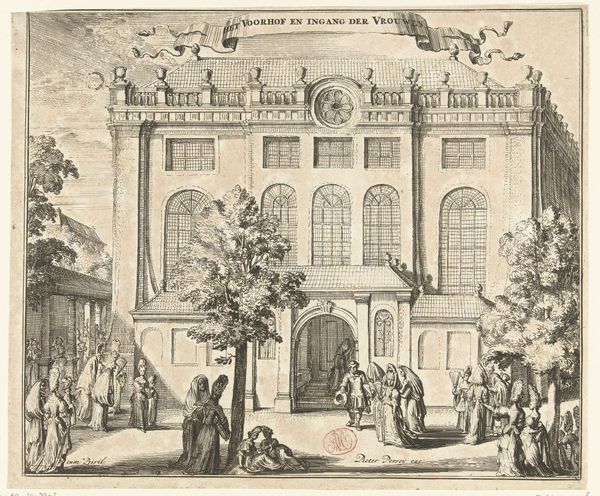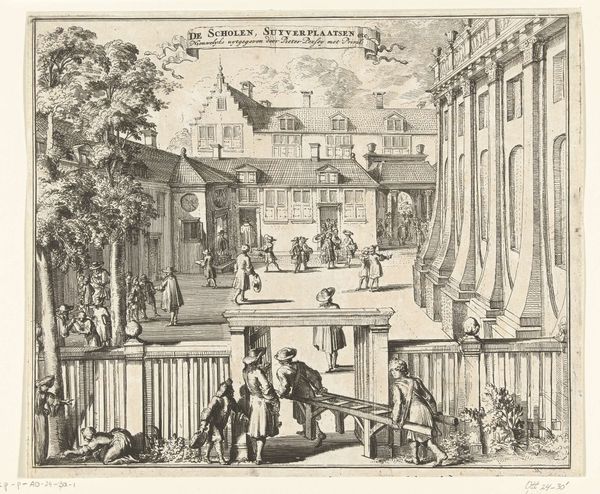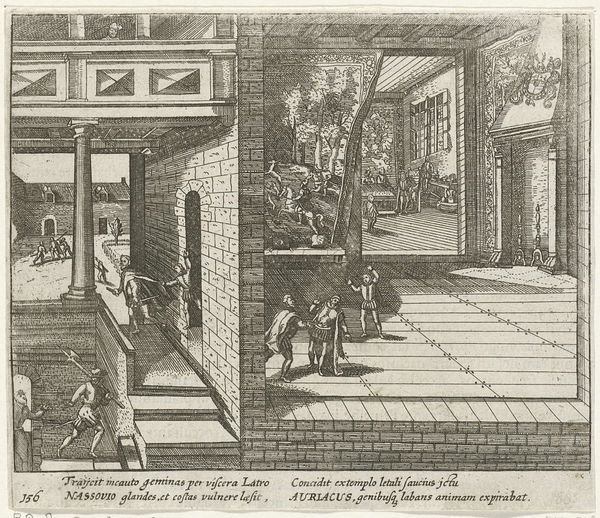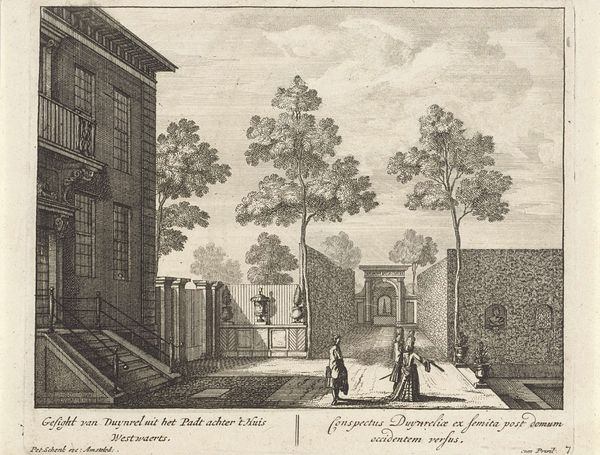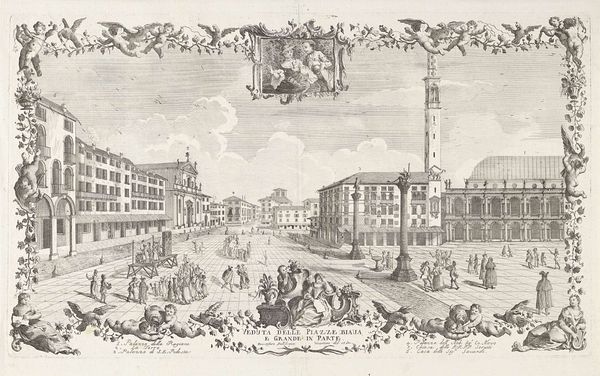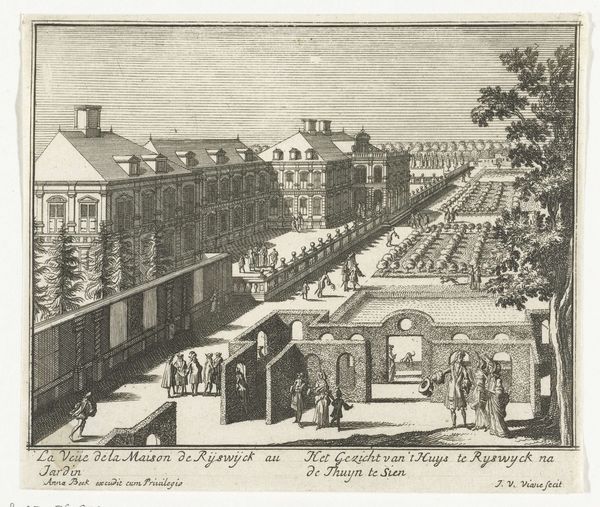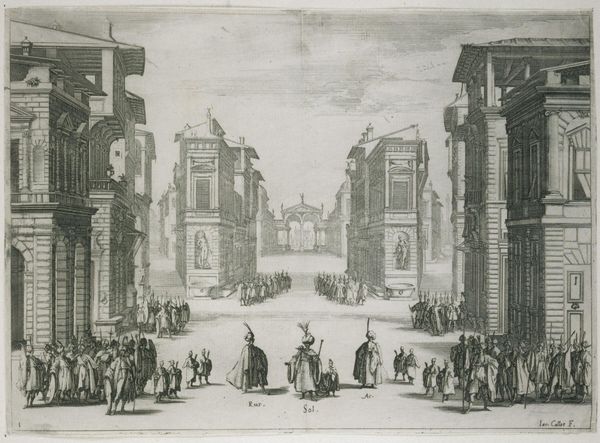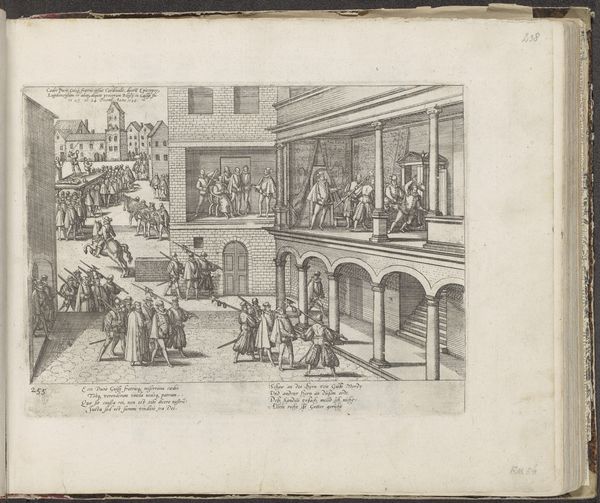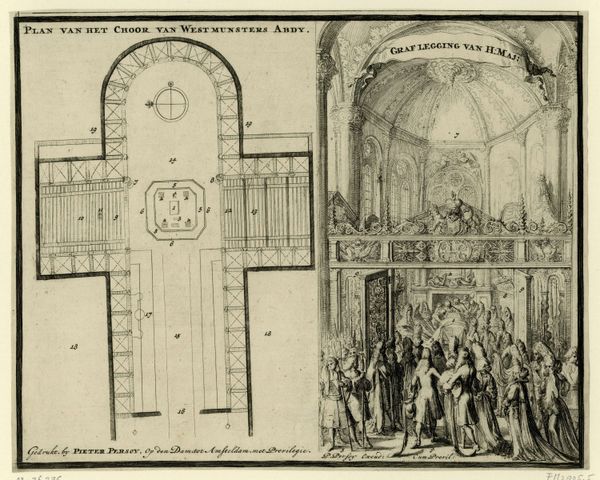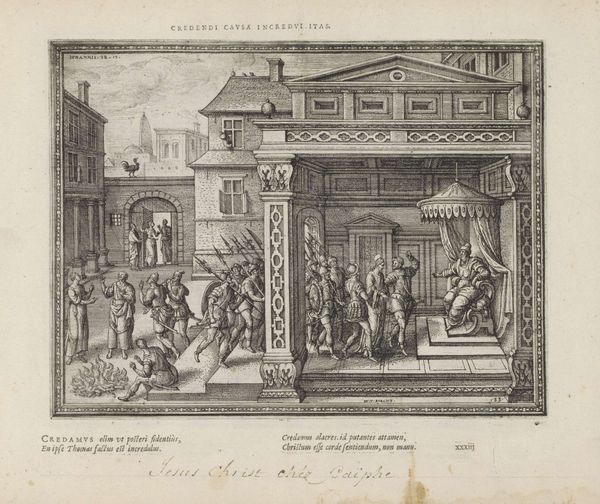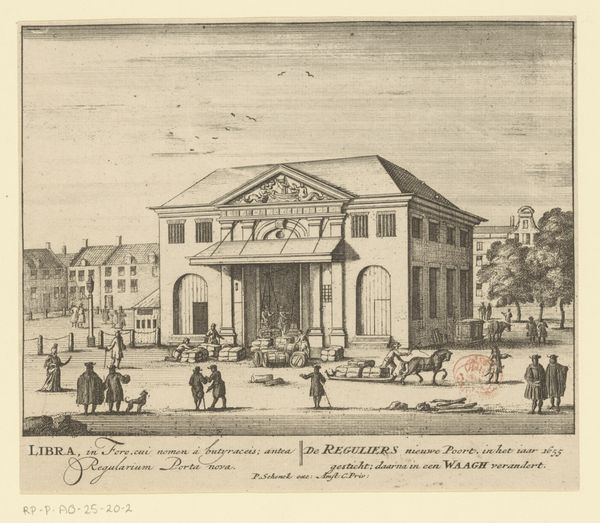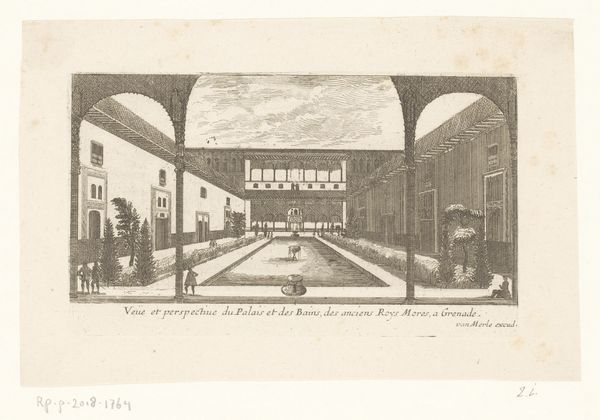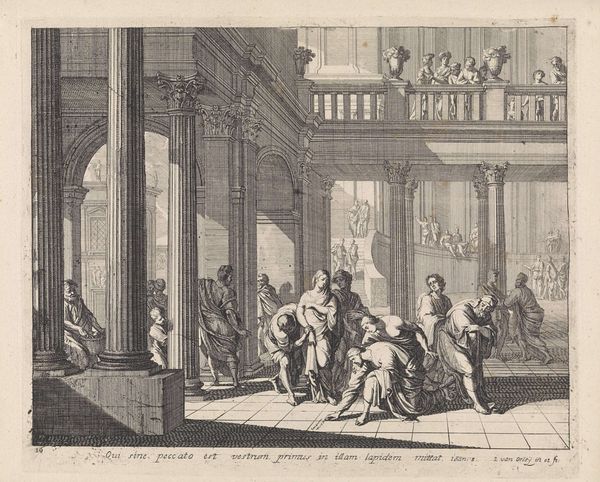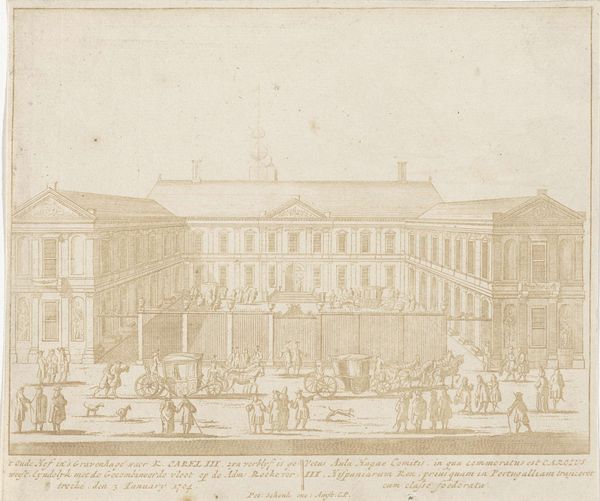
drawing, lithograph, print, etching
#
drawing
#
baroque
#
lithograph
# print
#
etching
#
cityscape
Dimensions: height 212 mm, width 267 mm
Copyright: Rijks Museum: Open Domain
Curator: Welcome. We're standing before a print, specifically an etching and lithograph, entitled "Prentenwinkel van Pieter Schenk op de Leipziger Messe." It’s attributed to an anonymous artist and dates roughly from 1675 to 1711. You can find it here at the Rijksmuseum. Editor: The overwhelming impression I get is of bustling industry, and almost… claustrophobia? The marketplace feels crammed, although the linear perspective creates a sense of depth. You can almost hear the chatter of merchants. Curator: Indeed. Consider the location, the Leipziger Messe. Fairs like this were central to the circulation of goods and, crucially, ideas. It served as a nexus, especially for Dutch printmakers like Pieter Schenk, whose work shaped European visual culture and knowledge production. This wasn't merely about art; it was about commerce, intellectual exchange, and the construction of early modern European identity. Editor: Precisely! And if you observe carefully, you'll see prints piled high. They are a commodity being traded and consumed just like any other textile or spice, their value measured not only aesthetically but also in their utility for disseminating information and influencing public opinion. What labor was involved in their creation, the sourcing of materials? What does it say about the lives of these artisans and laborers, if their output can simply be bought or sold? Curator: That's an incisive point. I'd push that a bit further: consider who had access to these images. We see finely dressed individuals in the foreground. What were the experiences of marginalized people who wouldn't have had the ability to access the space? And what stories might the architectural context be telling, especially given the legacy of the place over centuries? Editor: So true. Let's not neglect how techniques such as etching and lithography democratized image production, but those technologies themselves needed specific forms of skilled work, organization and division of labour. Also, in these types of bustling prints one can ask, is labor even represented or emphasized? Curator: A print like this then, I think, acts as a testament to the dynamism of early modern Europe but also as a visual archive that lays bare power structures and social complexities that continue to resonate even today. Editor: This image definitely prompts one to consider that, and by looking closely, the work’s intricate process and purpose give way to insights about production, dissemination, and society at large.
Comments
No comments
Be the first to comment and join the conversation on the ultimate creative platform.
